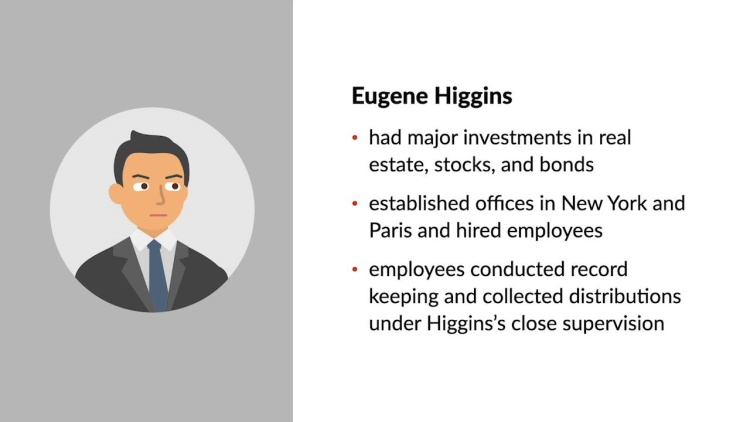Higgins v. Comm'r of Internal Revenue
United States Supreme Court
312 U.S. 212 (1941)

- Written by Sara Rhee, JD
Facts
Higgins (plaintiff) had substantial holdings in both real estate and securities. He set up offices in New York and Paris and hired employees dedicated to overseeing his investments. His staff handled the day-to-day responsibilities related to the investments under Higgins’ close supervision. Their responsibilities included keeping records and collecting interest and dividends. Higgins relied on these offices in this manner for over thirty years. In 1932 and 1933, Higgins deducted the salaries of his employees and other expenditures related to his two offices as ordinary and necessary business expenses. The Commissioner (defendant) disallowed the deductions on the grounds that personal investment activities did not constitute the carrying on of a business. However, the Commissioner conceded to the Board of Tax Appeals that Higgins’ real estate activities constituted a business. The Board of Tax Appeals held that insofar as the expenditures related to Higgins’ real estate, the expenditures were deductible. The activities related to his securities, on the other hand, did not constitute the carrying on of a business and were non-deductible. Accordingly, the Board of Tax Appeals ordered the apportionment of Higgins’ expenses between his real estate and securities operations. The Court of Appeals affirmed. The Supreme Court granted certiorari.
Rule of Law
Issue
Holding and Reasoning (Reed, J.)
What to do next…
Here's why 899,000 law students have relied on our case briefs:
- Written by law professors and practitioners, not other law students. 47,000 briefs, keyed to 994 casebooks. Top-notch customer support.
- The right amount of information, includes the facts, issues, rule of law, holding and reasoning, and any concurrences and dissents.
- Access in your classes, works on your mobile and tablet. Massive library of related video lessons and high quality multiple-choice questions.
- Easy to use, uniform format for every case brief. Written in plain English, not in legalese. Our briefs summarize and simplify; they don’t just repeat the court’s language.





